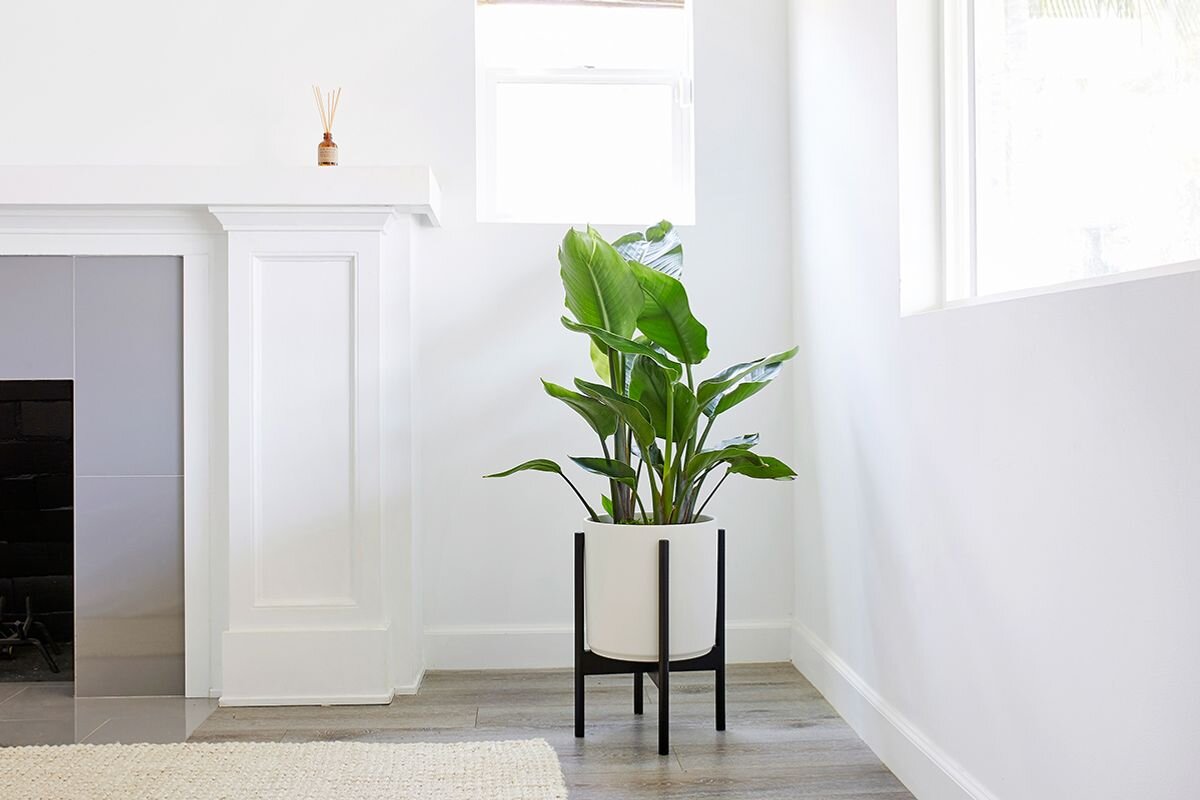A monthly round-up of what we’re reading in the world of plant styling, interior design, and more.
January may be the official start of the new year, but for many of us, there’s no time like September to feel change in the air. With temperatures cooling down, kids going back to school, and summer vacations a thing of the past, we begin to settle into routine at home (and in a way, we’ve been practicing for it all year). This month, find some helpful and hopefully inspirational material on finding that groove and getting back to work.
Simple tips to add biophilic elements to your home
Humans are instinctually drawn to the natural world, and design that incorporates elements from nature can have a positive effect on our well-being. This is the theory behind biophilic design, a term that is becoming more and more mainstream every day. “But what do you do if the view from your bedroom, living room or home office window is a brick wall, rather than trees, and you’re not able to move or remodel?” This is the question posed in a wonderful Forbes article outlining tips on how to incorporate biophilic design (in small ways) into your home.
The Declutter Cure
Fall refresh, anyone? If you’re using your space for both home and work, you may feel the need more than ever. If that’s the case, roll up your sleeves and tackle step one: declutter. Apartment Therapy is running what they’re calling the Decluttering Cure, a 20-day guided “course” of sorts on how to make your home the calming, tidy sanctuary you’ve always dreamt of.
The Value of Investing in Educational Design
Whether you work in education, are a parent to kids of your own, or simply have an interest in design, there might be something for you in this timely piece highlighting three educational projects that break traditional norms. Though not everyone is headed back to a physical school this fall, some ideas may be easily extracted for distance learning (and working from home!), including bridging the learning experience between indoors and out.
An elegantly curated Work From Home edit
Is decorating ever really complete? Improving your indoors is a bit of a constant in life, so if you’re looking to elevate some elements of your work from home space, our friends at Snowe have curated a small collection of handpicked essentials that “prize productivity while providing more style than the supply closet.” Check out the edit here.
What’s inspiring you this month? Let us know in the comments!
Photo by Hiroyuki Oki for Frame.
Indoor plants, potted & delivered
Premium plants paired with stylish ceramics, plus lifetime plant care support. Order online at leonandgeorge.com







































